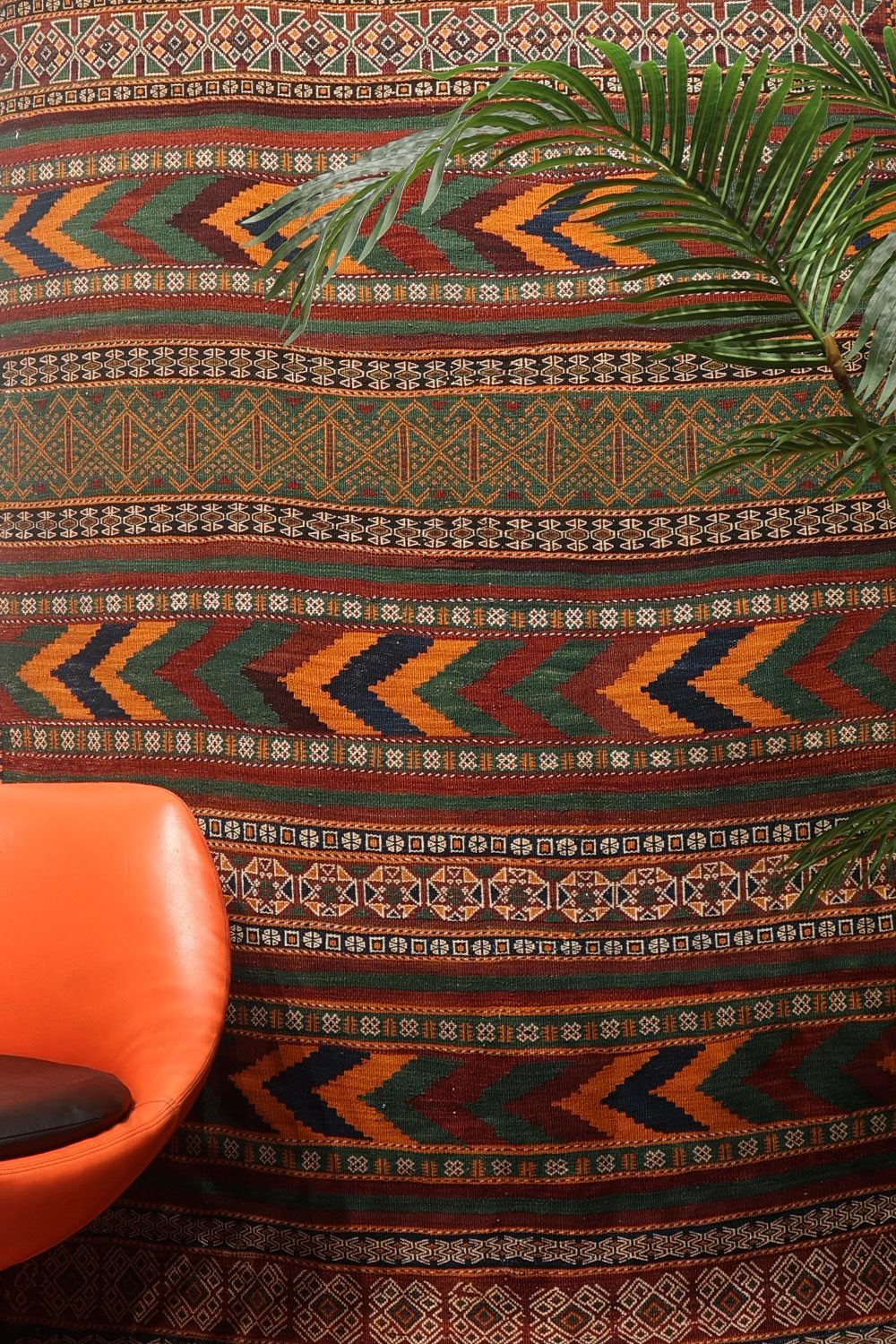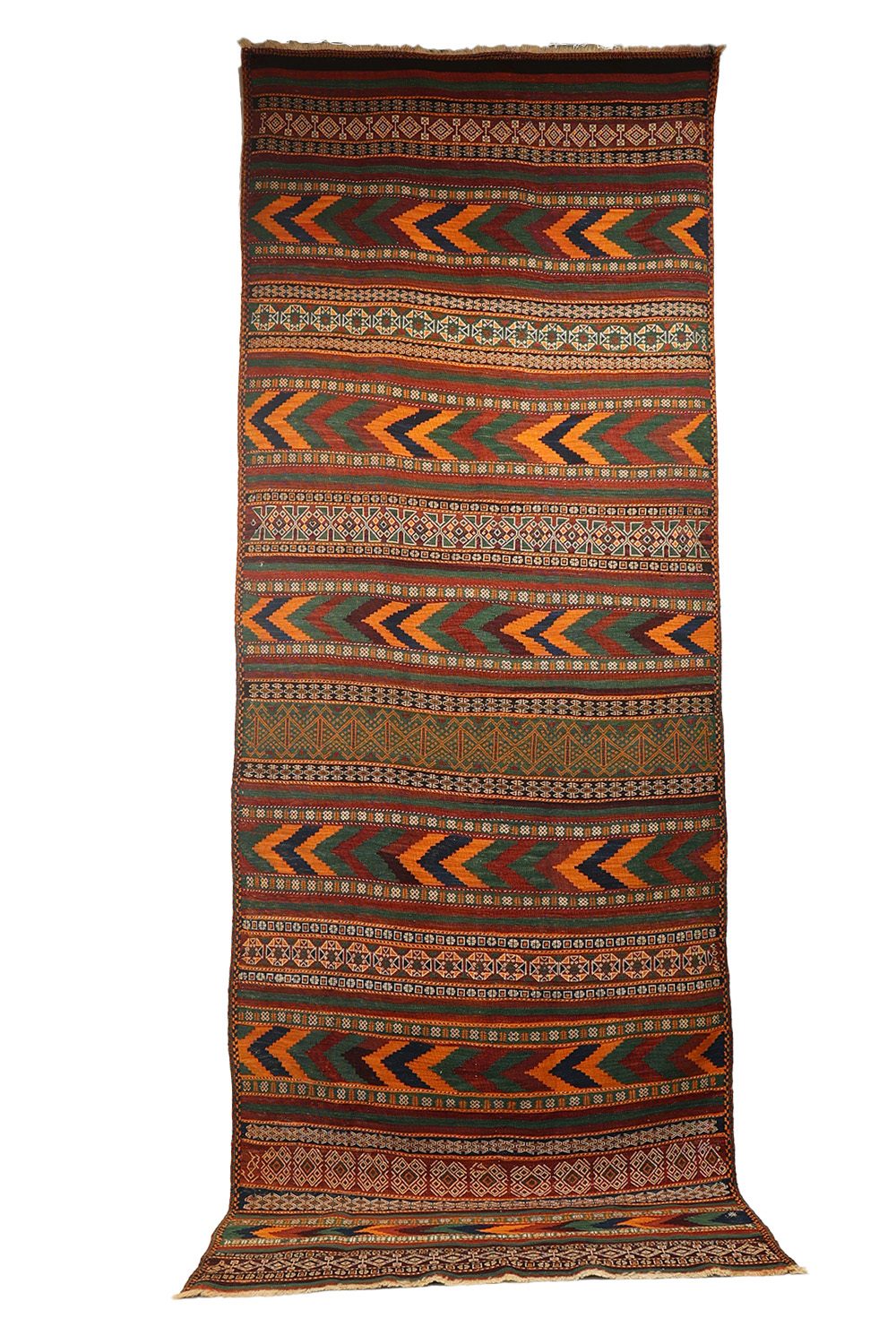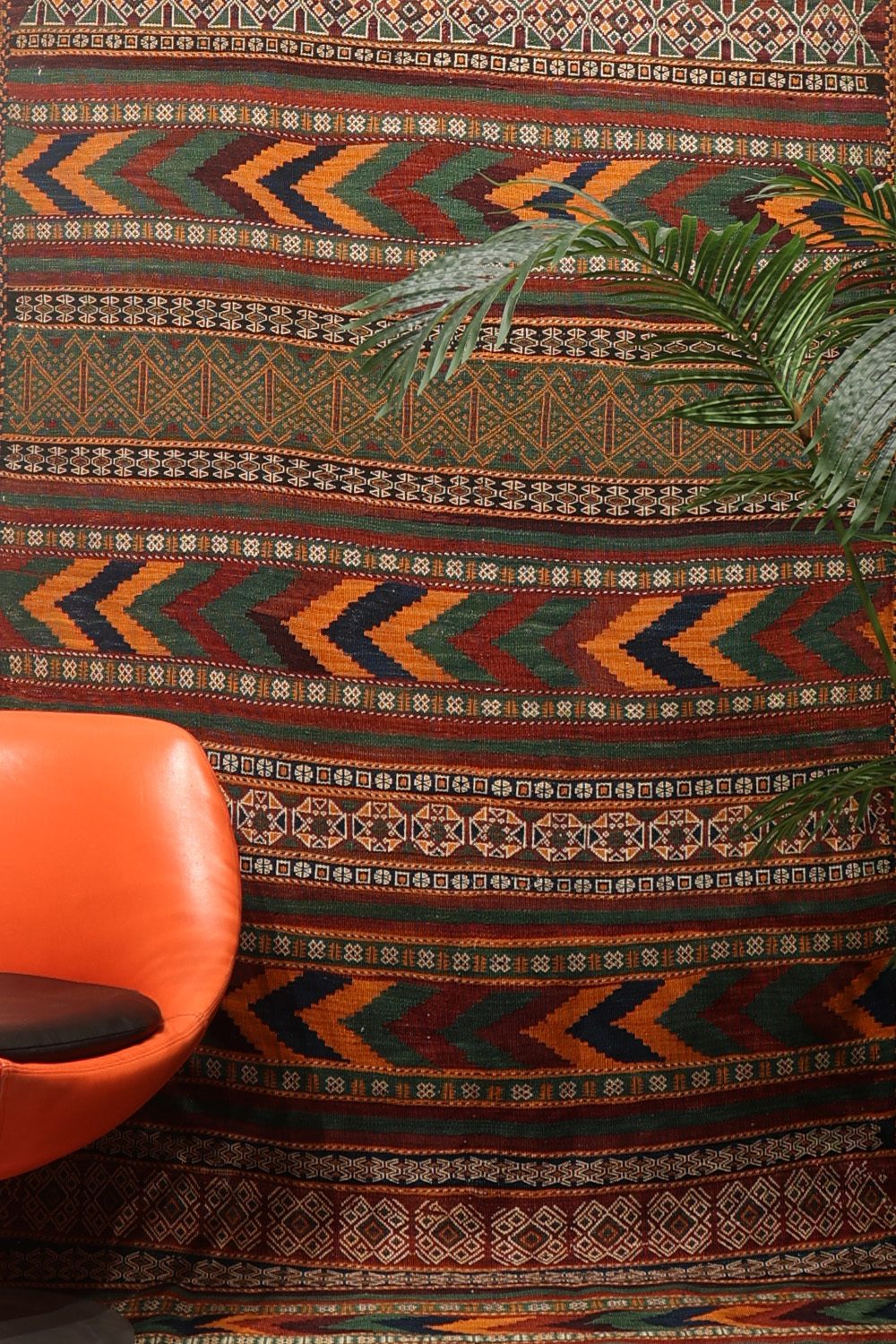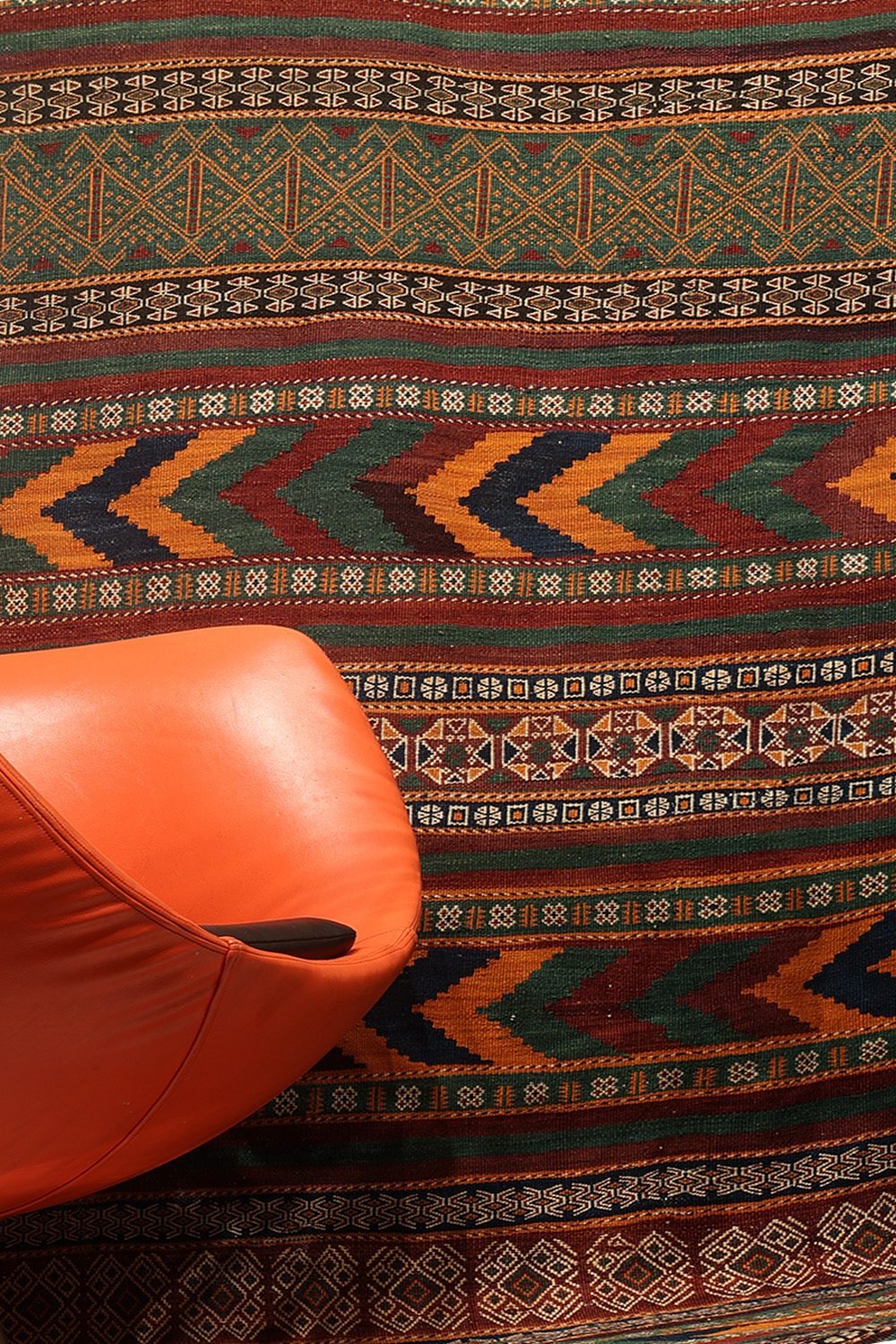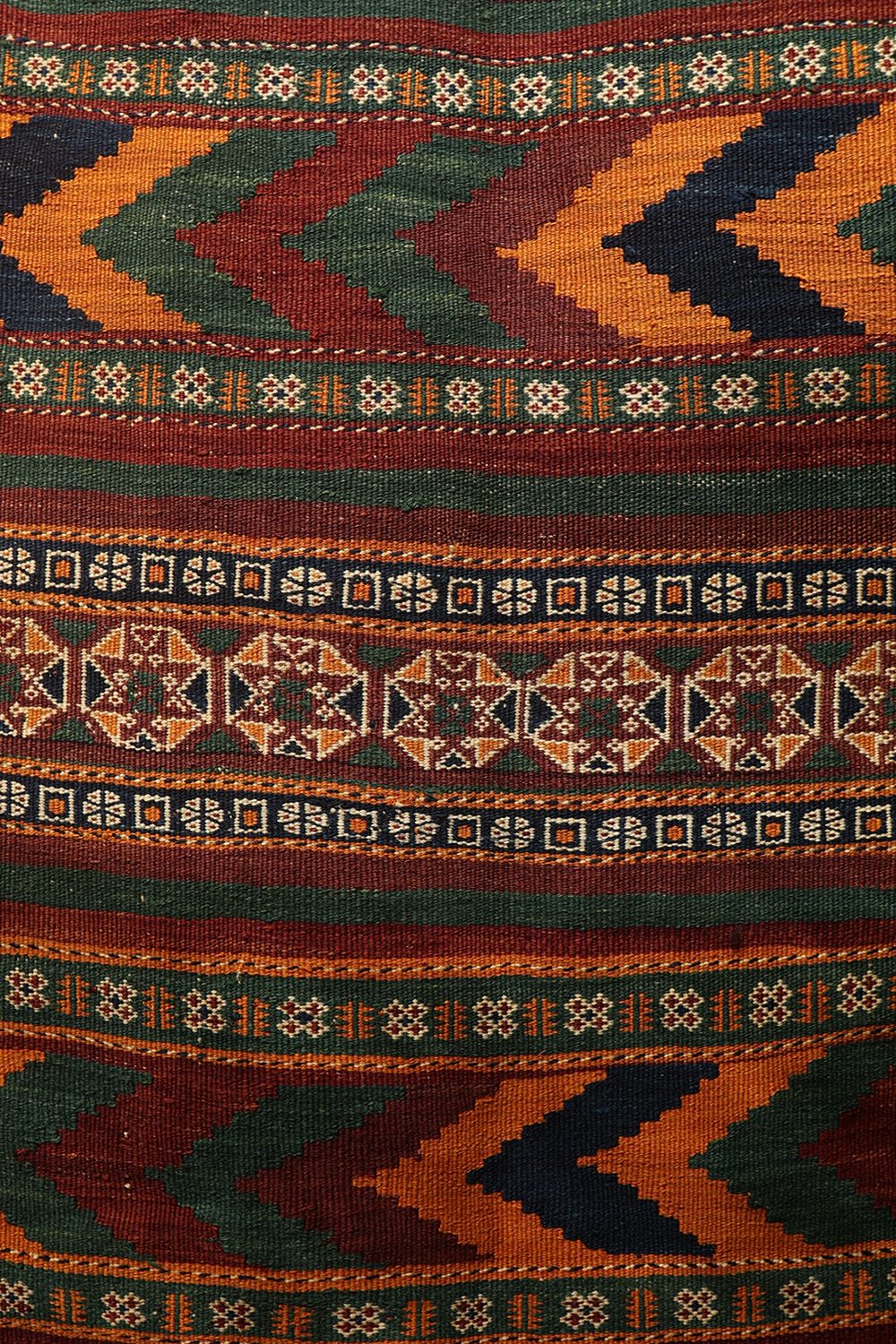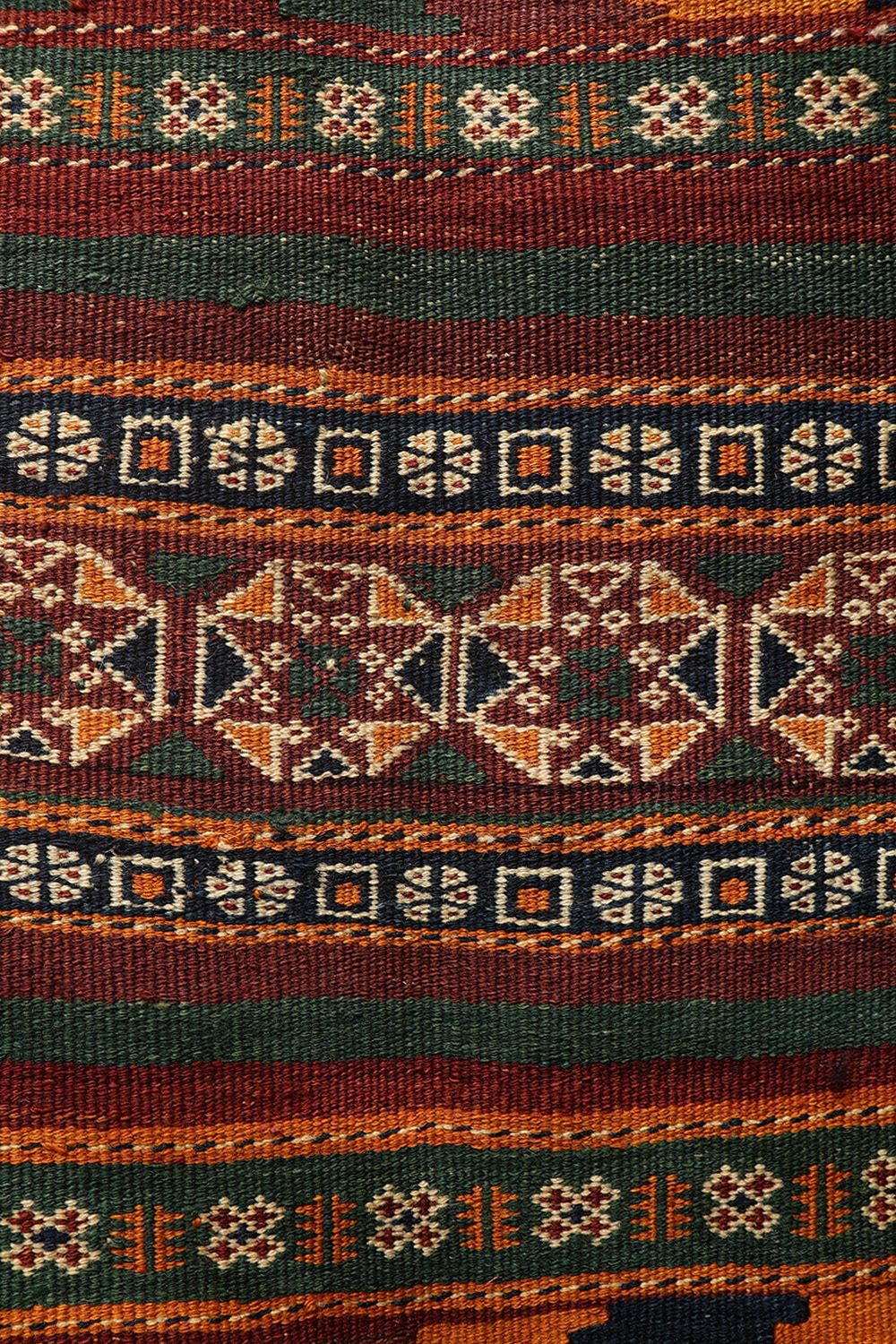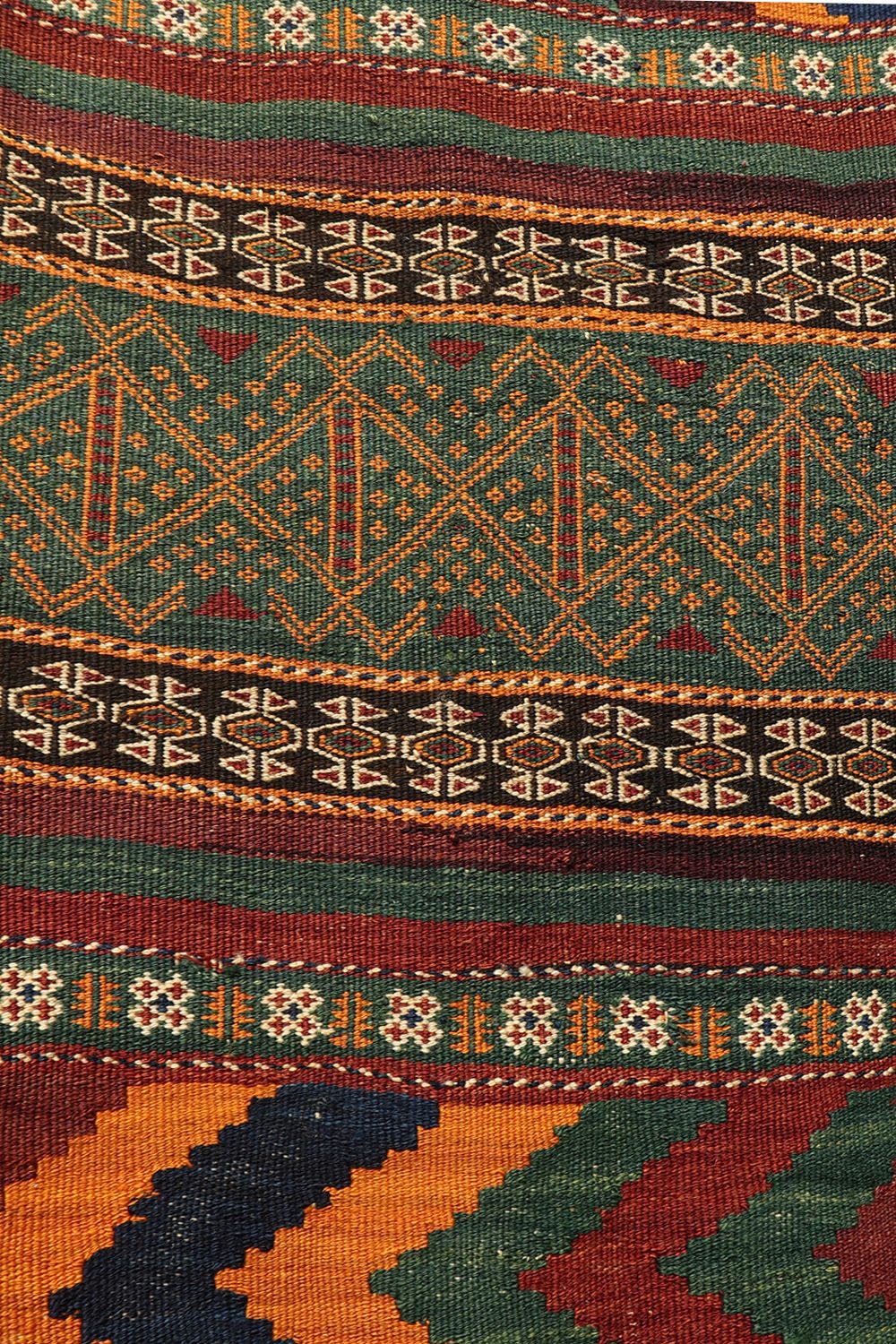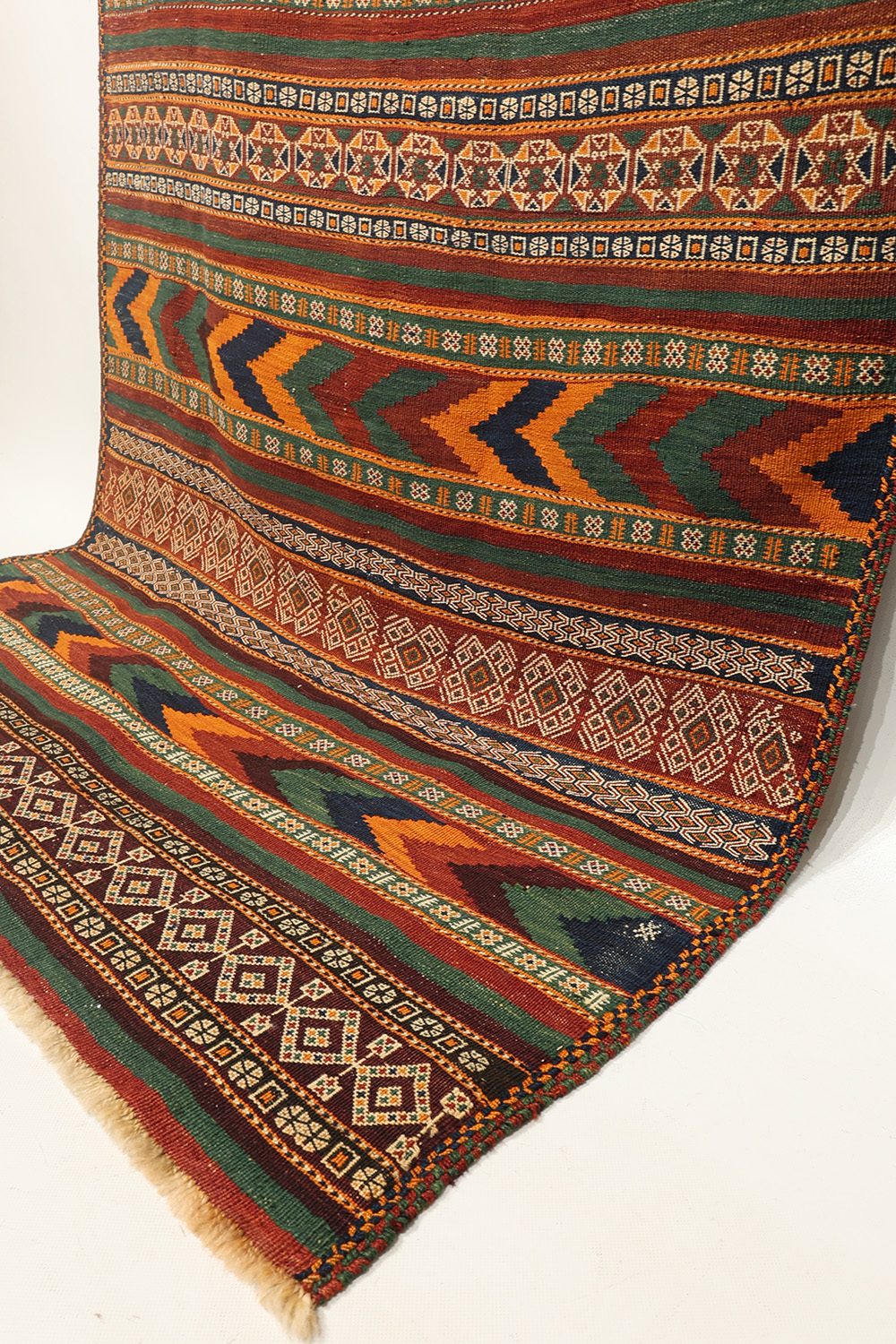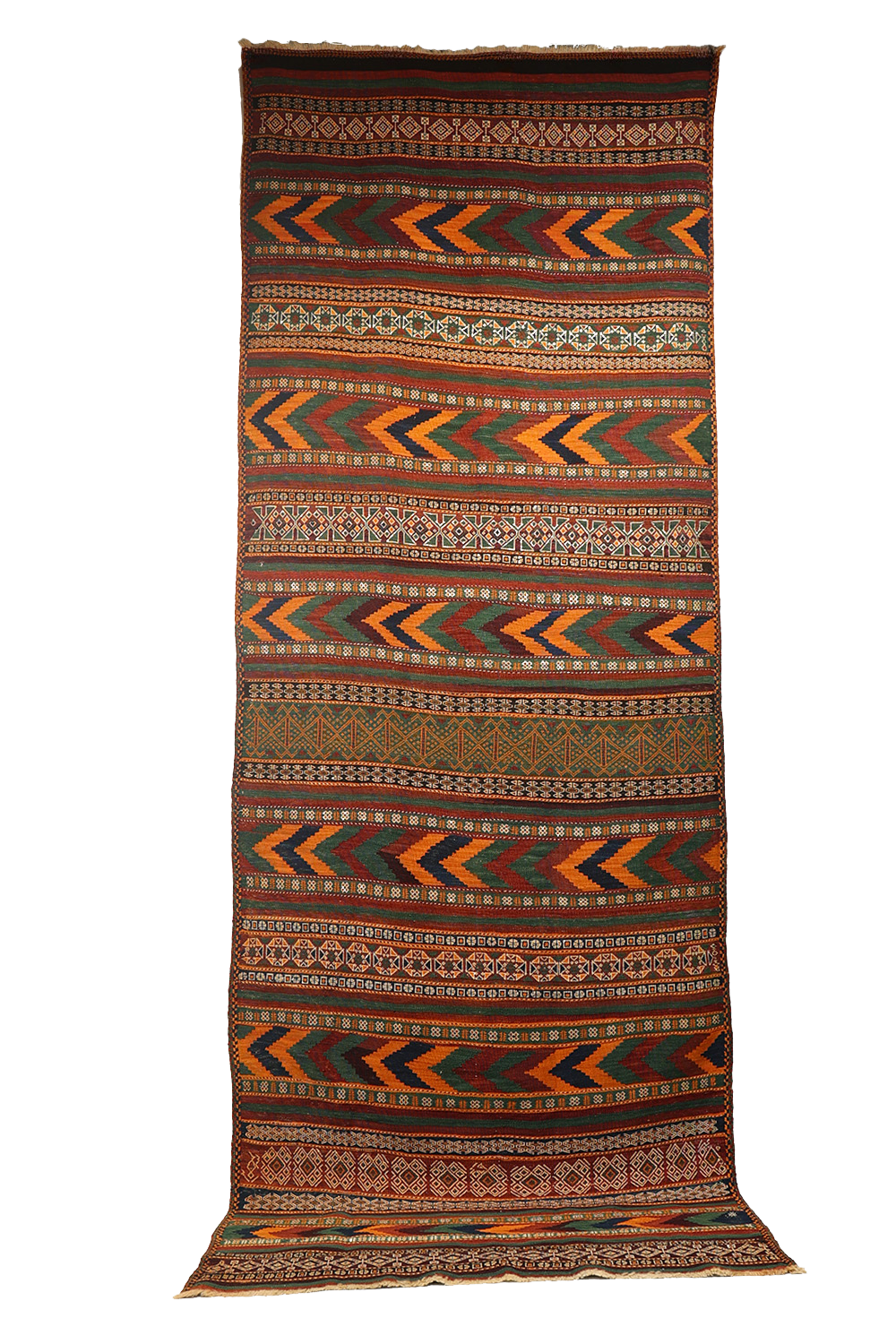1,750.00 €
A robust Baluch kilim from the 1920s, woven in the Sind region. The kilim stands out for the fineness of the design, combining bands of different width filled with small white motifs, including 8 pointed stars. All the dyes are natural and outstanding, particularly the green and ochres. In mint condition.
Within the Changai province of Pakistan, and eastwards to Kandahar and the edges of the Sind Desert, lies the Western part of Baluchistan. This area has long produced fine nomadic flatweaves. The colour of the field is bright, of ligth madder root and red and orange creating by overdying madder red with a concoction made from pomegranate skins or yoghurt. The finest are used as covers for bedding and clothing stacked at the back of the tent. These are shaffi, recognizable by their very finely woven borders of white wool with rows of tiny motifs running into the plainweave bands of the field.
Material: 100% hand-spun sheep wool
Size: 334×120 cms
Origin: Baluch tribe, Afghanistan
Date of weaving: 1940s
The Baloch or Baluch are an Iranian people who live mainly in the Balochistan region, located at the southeasternmost edge of the Iranian plateau, encompassing the countries of Pakistan, Iran and Afghanistan. There are also Baloch diaspora communities in neighbouring regions, including in India, Turkmenistan and the Arabian Peninsula.
Kilims or Gilims are flatwoven textiles with a woollen weft on a woollen, goat hair or cotton warp. There are many different techniques and designs. The weaver normally works within a tradition of techniques, motifs and designs specific to a particular area or ethnic group. The designs relate to her natural surroundings, protection, fertility and the harmony of family relationships. Each weaver adds something from her own creativity and sense of composition. Kilims are often woven as part of a marriage dowry and can be used to create many different objects like storage bags, horse-blankets, baby carriers, blankets and wall and floor coverings.
This kilim was hand-woven on a simple loom by a village or nomadic weaver for her own use. Probably the weaver used wool from her own sheep. The wool was first cleaned, then hand-carded, hand-spun and finally dyed by hand, often using natural dye materials like roots, nuts, berries, fruits, flowers and plants. Kilims from the last quarter of the twentieth century mostly use synthetic dyes. This kilim would have taken many months to complete.
All our kilims selected in the country of origin and are professionally washed and restored before we import them directly from Iran, Turkey and Afghanistan. Natural patina and charming imperfections in design and colour (abrash) are highly valued characteristics of hand-woven kilims.
1 in stock
Additional information
| Weight | 8.5 kg |
|---|
Subscribe and receive the lastest news
